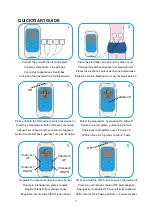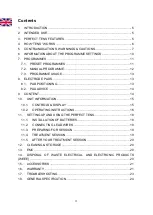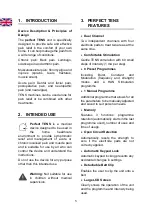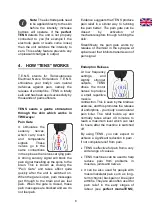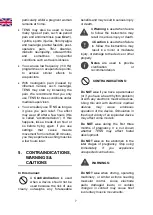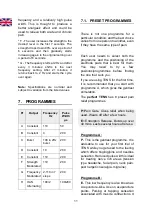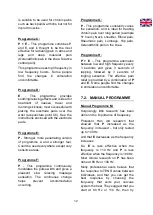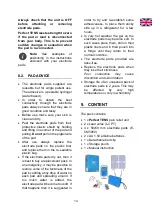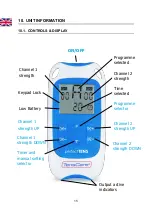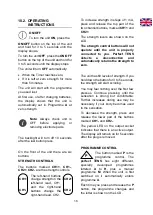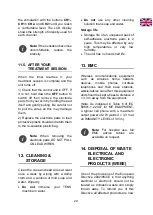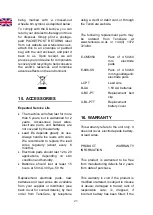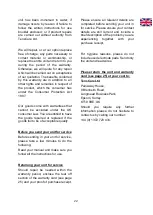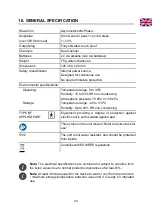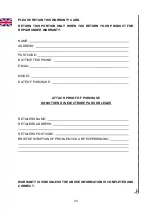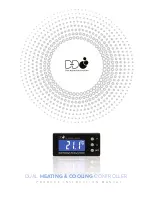
10
Note:
There are no known side
effect to TENS use and long-
term TENS use is not harmful.
6. INFORMATION ABOUT
THE PROGRAMME
SETTINGS
Each programme has its own
combination of Frequency and Pulse
Width settings which allow for different
sensations through the electrode pads
and suppress pain in different ways.
•
Frequency (measured in Hz -
pulses per second)
PAIN GATE: A high frequency of 110
Hz is good at blocking pain signals.
ENDORPHINE RELEASE: A low
frequency of 4 or 10 Hz allows for the
release of endorphins, the body’s
natural morphine-like substances.
•
Pulse Width (measured
in μs
-
millionths of a second)
The
perfect TENS
unit has pulse
widths of 50 to 250
μs. Generally
speaking, the higher the pulse width,
the more "aggressive" the stimulation
feels, and eventually, if the pulse width
is set high enough, it will usually elicit a
muscle contraction, which is typically
not the desired result with a TENS unit.
However, if the pulse width is too low,
the patient may not perceive the
stimulation. Pulse Rate is important
because different frequency settings
target different nerve groups and the
setting will determine if the "Gate
Theory" or "Endorphin Theory" of TENS
will be used.
•
Constant and Burst Modes
Constant mode is when the sensation is
continuous versus Burst mode when
the sensation, as its name implies, is
one of on and off. Constant mode is
often used for acute pain via Pain Gate
Effect whereas Burst mode is useful in
chronic pain relief. Burst gives a
combination of Pain Gate and
Endorphin Release, but the squeezing
feeling may not be as comfortable. The
sensation in Burst is more of a
‘grabbing’, ‘clawing’ type and usually
more by way of muscle twitching than
with the high or low frequency modes.
The stimulation intensity will need to be
relatively high. In Constant mode, the
sensation is continuous and is more of
a tingling pins and needles type.
•
Modulation Modes
Modulation is when either the
frequency or pulse width sweep across
range of settings. In modulation mode,
the machine delivers a less regular
pattern of TENS stimulation in an
attempt to reduce or minimise the
accommodation effects of regular,
patterned stimulation. This is potentially
most useful for patients who use TENS
for several hours a day, if for no other
reason than accommodation occurs at
a slower rate and therefore less
intensity adjustment may be required.
See programmes F and G.
•
HAN Stimulation
Invented by Professor Han, it is an
alternating mode or shifting between
high and low frequencies; stimulation
works at a high frequency and a
relatively low pulse width; and a low
Summary of Contents for perfect TENS
Page 1: ...0 INSTRUCTIONS FOR USE READ CAREFULLY BEFORE USE...
Page 110: ...109 Notes...


